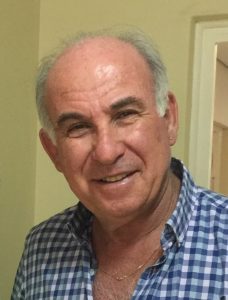

















Reviewed by Sorrel Kerbel
16 February 2021
Dr Sorrel Kerbel, D.Phil (UCT), is editor of Routledge Encyclopedia of Jewish Writers of the Twentieth Century, 2003 and 2010 , and a contributor to the Memorial book of Rakiskis, Rokiskis Lithuania, Bakalcuk-Felin, M, Jewishgen.com, 2018.
And if I were to light a yellow candle, it would serve to remember and honor the portable hell of The Lithuanian Slaughter of its Jews by Leyb Koniuchowsky, 2020. His book of testimony from 121 survivors is a wonderful achievement that will allow readers in English to learn for themselves what happened in so many small villages, (shtetls or shtetlach in Yiddish) in the Lithuania of World War II. We read detailed and graphic testimony from tiny villages, not the main Lithuanian cities, where just a few Jewish families lived side by side with their Lithuanian neighbors. A very few eye-witnesses escaped to tell their tragic stories.
Leyb Koniuchowsky (1910-2003) was born in Alytus/Alyta and trained as an engineer in Kaunas/Kovno. After WWII and his release from the Kovno ghetto, he wandered the Lithuanian countryside looking for fellow survivors to bear witness. Those he found were in Displaced Persons camps. The book he produced acts as a memorial for all those silenced tongues who could not speak for themselves. It further contains details of shtetlach and forced labor camps never previously noted.
A Kaddish
Leyb’s witnesses lived in places where the bleak pits in which they were massacred are now covered over and forgotten, and the villages themselves are now no longer to be found on official maps of Lithuania: Adukishkish, Akmene, Anykshtsiae, Alsedzhiai, Alytus/Alyta, Anykshtsiai, Babtai, Biliunai (near Raseniai), Botik (Batakia), Darshuniskis, Daugelishkis, Dukshtas, Erzhvilik (Erzvilkas), Geruliai (near Plunge), Heidekrug (Silute, Memel/ Klaipeda), Ignalina, Jonishkis, Jonava, Jerusalimka, Jurbakas, Kalwelischken, Kedainiai, Khaltinenai, Khvedan (Kvedarna), Klikoliai, Kelm, Koltinan (Kaltinenai), at the Seventh Fort, Kovno/Kaunas, Krazhiai, Kruonis, Krukiai, Lentupis, Laukuva, Liplauke, Luoke, Malagenai, Marcinkonis, Maishiogala, Mazheikiai, Maktubern, Nayshtot/Naishtot, Nementzine, Padibiskis, Padbrade, Pabersha, Pajuris, Pakuonis, Piktaten, Pilviskes, Ponari/Ponary, Rieshe ,Rumsiskis, Rusne, Shimkaitsia, Tawrik (Taurage), Telzh, Tirkshlaiai, Titovenai, Tverai, Tzaikinia, Sheta, Shvekshne (Sveksna), Shvetzionyz (Shventzionelai), Shilale, Silven, Skaudvile, Stakiai, Seda, Shtajatskiskis, Suderwa, Tveretszius, Tzeikiniai, Upnyas, Valkininkai, Varnia, Varus,Vainuta (Vainutas), Vendzhiogala, Versmininken, Verzhan (Veivirzhenai), Vidz, Viedukle,Vilkija, Vegerai, Vekshniai, Vieshvenai (near Rietuva).
For centuries people lived in this way. A myriad of sparsely populated small villages alongside rivers, lakes and the Pripet marshes, in the deep unspoiled countryside surrounded by farms and woods “of birch and oak, fir and pine … their roots entwined” (here I quote Koniuchowsky’s description of their natural environment, to be published later this year as Slaughter of the Jews, Part II.)
The few Jews in the countryside lived there side by side with their relatively peaceable neighbors. Then a sudden litany of terror.
Lithuania began slaughtering its Jews in June 1941, before and then after the ‘official’ invasion of Operation Barbarossa on 22 June when German tanks began rolling across Lithuania in two spearheaded directions into Russia. They were organized and appear to have been galvanized by a coterie of like-minded antisemitic Lithuanians.
Long before the Wannsee conference of January 1942 began determining in minute detail how to define a Jew for extinction, there were Lithuanians like Jonas Noreika and Antanas Baltūsis-Žvejys who took the initiative in this climate of extremism. In the period June-December 1941, many thousands of Jews, men, women and children, perished before the gaze, and often participation of their neighbors. Yet the record also reveals instances of individual courage and morality by brave and good Lithuanian people, “Righteous Gentiles” who hid and helped their Jewish neighbors. This offers us a glimmer of hope for the future.
To commemorate the 75th anniversary of the liberation of Auschwitz In the UK in January 2020, we were shown a number of interesting films. One, a BBC documentary called ‘Confronting Holocaust Denial’, featured celebrity Jewish comedian David Baddiel, who visits Vilnius in Lithuania and interviews a Lithuanian farmer’s son and other neighbors. The farmer in a flat cap smiles as he remembers how his village watched their few Jews rounded up in their high street. “Yes” – he saw and heard their cries as they were rounded up.
We now know that these farmers hastily moved into the now vacant homes after their owners had been forcibly removed to ghettos and murdered after the officers had taken first choice. And we are also shown upturned Jewish grave stones with their inscriptions intact that were commonly removed from cemeteries to be used for pavements and building supplies.
But we also learn from the caring Lithuanian historian who guides Baddiel on his travels how napalm had to be used to destroy corpses in pits many years later, when even the Lithuanian peasant farmers had left to settle in cities .“It’s not easy to burn a corpse”. We saw Baddiel shocked – tears well up – as he hears the historian relate how bones and skulls were ground “fine as ash” to be used as fertiliser. Unimaginable.
Baddiel challenges a right-winger who has Nazi emblems in his home, to read the newspaper stories written by Sylvia Foti in her quest for the truth about her grandfather Jonas Noreika. Widely known as General Storm and honored for his resistance to the Russian occupiers, Noreika’s plaque was put up in many Lithuanian centres, and streets are named in his honor. But Foti discovers verbal accounts, ghetto and plunder accounts of her grandfather’s orders. In this book of testimony, we read of Jonas Noreika ‘s influence over locals who then compelled the few Jews in these isolated villages to march out to woods nearby and having to dig their own graves in a clearing before locals would gun them down or kick them into these pits. Initially lime was poured over the mass pits where the bodies fell. There were few witnesses because the success rate in these “death by bullets” was so high. This book provides many verified witness accounts.
In the above-noted BBC documentary, David Baddiel disarms us with his humor. But here in Lithuania he shows a film of a plaque honoring Jonas Noreika in Vilnius being destroyed recently by a local lawyer, Stanislavsky Tomas, surrounded by a group of cheering students – perhaps they too had read the stories emerging in Lithuanian newspapers. Hopefully next year they will read Sylvia Foti’s book, called Storm in the Land of Rain: a Memoir Unmasking a War Criminal (due to be published in English by Regnery History, in 2021)
In her account, Foti discovers Lithuanians who knew her grandfather who claim that he was forced to be a signatory to the deaths of many Jews. The Genocide Centre in Vilnius disputes this – their denials include the worrying misinformation that no-one told Noreika anything nor did he see any slaughter of Jews. But when he did, according to the Genocide Centre, he started a “secret” rescue operation of Jews. Nor was he aware that the house he had acquired belonged to a Jew, and that the very underwear he received for his wife came from a Jew. His grand-daughter unmasks him as a war criminal.
Perpetrators honored
Antanas Baltūsis-Žvejys was another of the worst Holocaust deniers and killers of Jews. As District Commander of Police in Vilnius, he was ordered to guard and protect everyone including his Jewish neighbors. But on his watch they were rounded up and force-marched to clearings in the vast Ponary Forests, now a nature reserve, where men , women and children were compelled to dig their own graves in vast communal gravel pits, and were then shot by locals in possession of a gun, shot or kicked into the pits.
In publisher David Sandler’s editorial introduction (p6), we read that Leyb Koniuchowsky took yet more witness accounts from other Lithuanians after the war when he landed up in She’erit Hapletah DP camps in Germany.This term, Sh’erit ha-Pletah , requires more explanation . It derives from Biblical phrases found in the books of Chronicles, Ezra and Nehemiah, and refers to those Jews who remained behind in Israel after the destruction of the First Temple in Jerusalem in 586 BCE. The modern phrase was adopted by Rev. Abraham Judah Klausner, an American Army Chaplain in June 1945 when he compiled a six- volume registry of Jewish Displaced Persons, and the name was taken up by delegates to the Congress of Sh’erit ha-Pletah, in Munich, February 1946, an organisation that exists today. Later, Koniuchowsky researched other Lithuanian records that he found in concentration camps at Auschwitz, Warsaw, Warsaw Ghetto, and Birkenau. Now his meticulous records have been published in February, 2020, we know that 90-95% of Lithuania’s Jews perished: a percentage that sadly exceeds that of Poland, Yugoslavia, Latvia and indeed that of Nazi Germany.
In his precise daily reports, SS Commandant Karl Jaeger of the 7th Fort at Žaliakalnis district of Kaunas also records for his Nazi masters, and now for posterity the “essential help of local Lithuanians, 4000 were liquidated in pogroms and executions exclusively by Lithuanian partisans.”
In this book, evidence is taken about the shtetl of Keidan where the Lithuanian mayor, pharmacist and hotel keeper acted entirely on their own, and were so cruel the Jews actually appealed to the Nazis to protect them from their cruelty.
The victims deserve proper memorials like Stolpersteine (stumbling stones). Not plaques and streets named after their killers, along with National awards and honors – insults that deny the truth about their victims.
About Leyb
Leyb Koniuchowsky almost gave up hope of publication of his testimonies. He bravely kept these fragile handwritten papers safely under lock and key, but shored them up within himself, so he could sleep at night after repeated rejections from publishers.
Meanwhile the killers of the countryside Jews were not arrested for their crimes in independent Lithuania. During the Soviet period, the murder of innocent victims was found to be a crime, but Lithuanians still do not acknowledge these massacres as crimes. After all, today, the names of the villages themselves are lost to memory, the burial pits covered over so arable crops can be grown there.
What is unknown is that the Lithuanian leadership proposed the elimination of Jews to Germany, and completed their genocide as an example to it. Only after the completion of the Lithuanian slaughter of its Jewry did the Nazis follow suit to implement the Final Solution.
In 1950, Leyb was persuaded to give copies of his documents to Yivo, and in 1989 entrusted them to Yad Va’shem, where they were lodged and verified so he could resume his life after so many rejections. Then many years later in 2020, in distant Perth in the land of Oz a willing publisher emerged, David Solly Sandler. He didn’t ask the usual questions “Will it sell? Will it make money?” So Sandler also deserves much praise.
The book also offers a precious glimpse of the good times as well as gruesome horrors perpetrated in the second half of 1941.
Conclusion
But the extent of the Lithuanian participation in the genocide of Jews and their collaboration with Nazis continues to be downplayed in Lithuania. And so it goes…
In September 2020 the Lithuanian government is seeking to legislate their responsibility away after the summer recess this year. Is it serendipity or fate that Leyb’s important publication is now published this year? A proposed resolution by an MP in the Lithuanian parliament declares that Lithuania should be absolved of responsibility for the murders of Lithuanian Jews because Lithuania had the misfortune to endure much suffering during its occupation by Soviets and then by Nazi Germany. What is the logic in this?
We hope that this resolution fails, that the Lithuanian honoring of criminals will change. “From our mouths to God’s ears” as we used to say.
Yet the Litvak Roots industry from around the world continues to boom. It is disgraceful to many survivors and their families that delegations of Lithuanian travel agents arrive in Johannesburg to appeal to wealthy Jews in South Africa for help in the restoration of Jewish graves, memorials and plaques to enhance their Jewish visitors’ Lithuanian travel experience.
The testimonies above make these positions absurd and the Lithuanian government is answerable for its lack of awareness – it is they who ought to bear the financial burden of responsibility for restoration, they who ought to understand the plight of their own Jewish victims and their existing Jews, and not be so bound up within their own Nationalist grouping that they can’t perceive the calumny of their callous distortions of truth. At the same time, we recognize that contemporary Lithuanians are not guilty of the crimes of earlier governments. We salute and honor all Lithuanians who are honest now in exposing the truth.
The Lithuanian Slaughter of its Jews: The testimonies from 121 Jewish survivors of the Holocaust in Lithuania, recorded by Leyb Koniuchowsky in Displaced Persons’ camps from 1946 to 1948, English translation by Dr Jonathan Boyarin, published by David Solly Sandler, February, 2020. Available in soft cover from the publisher at sedsand@iinet.net.au, priced at US$60 (£45) including delivery; full proceeds go to Arcadia Jewish Children Home in Johannesburg.

Uploaded by Eli Rabinowitz
The Ochberg Orphans, previously known as the Ukrainian Pogrom Orphans, celebrate the centenary of their arrival in South Africa in 1921.
PUBLICATIONS ON THE OCHBERG ORPHANS AND ISAAC OCHBERG
by David Solly Sandler
Uploaded by Eli Rabinowitz
OCHBERG ORPHANS AND THE HORRORS FROM WHENCE THEY CAME (Volumes one and two published in 2011 and 2017) were compiled by David Solly Sandler who also reprinted in 2014
THIS WAS A MAN (THE LIFE STORY OF ISAAC OCHBERG 1878-1937) A reprint of the original book by Bertha Epstein, (published 1974) by kind permission of the biological Ochberg family.
Full proceeds on all three books go to Arcadia Jewish Children’s Home (run by the Chevrah Kadisha) and still looking after children in need.
Please contact David Solly Sandler sedsand@iinet.net.au for the books
OCHBERG ORPHANS AND THE HORRORS FROM WHENCE THEY CAME (PUBLISHED 2011)
Ochberg Orphans and the Horrors from whence they came (Published 2011 – 640 pages)

The rescue in 1921 of 181 Jewish Orphans by Isaac Ochberg, the representative of the South African Jewish Community, from the horrors of the ‘Pale of Settlement’
This book tells the story of a forgotten part of Jewish History; a period completely overshadowed by the Holocaust; the horrors of war and pogroms and starvation and disease suffered by Jews in the Pale of Settlement from 1914 to 1922. It details the horrors and the help given to these desperate people by Jewish communities established in the USA, Canada, Palestine and South Africa.
The book then focuses on, and follows up on the lives of the 181 Jewish Orphans rescued from the ‘Pale of Settlement’ in 1921 by Isaac Ochberg, the representative of the South African Jewish community. Half of these Ochberg Orphans, on arrival in South Africa, were placed in the care of the Cape Jewish Orphanage (later known as Oranjia) while the rest were sent to Johannesburg and placed in the care of the South African Jewish Orphanage (later known as Arcadia).
While the firsthand accounts of the Ochberg Orphans are included in part one of the book, the secondhand accounts, as recorded by their descendants, are in part two and part three of the book. Part two, Cape Town, South Africa, contains the history of Oranjia and the life stories of the Ochberg Orphans in its care and similarly part three, Johannesburg, South Africa contains the history of Arcadia and the life stories of the Ochberg Orphans in its care
The book contains the life stories of 120 of the 181 Ochberg Orphans.
“The Ochberg Orphans and the horrors from whence they came” reviewed by Lionel Slier.
Book review of “The Ochberg Orphans and the horrors from whence they came” compiled by David Solly Sandler . Review by Lionel Slier
2011 could be called “The Year of Isaac Ochberg.” Isaac who? was what many people would have asked previously. The South African Jewish Report called him: “South Africa’s long lost philanthropist.”
Isaac Ochberg was born in the Ukraine in 1878 and followed his father to Cape Town as a 16 year old youth (1894). He became a successful entrepreneur and business man, involved in ship buying, ships’ salvage, property, fashion shops and, in fact, built the first cinema in Cape Town. He became very wealthy and was also a philanthropist of note. He was the President of Cape Town’s Jewish orphanage. (1).
The First World War (1914-18) was fought on many fronts but it was on the Eastern Front where the German and the Russian armies confronted each other, on territory that was part of the Pale of Settlement (2) Eastern Poland, Belarus, and Ukraine mainly; that caused devastation, destruction and death to the Jewish communities living there. How many died is not recorded. The fortress border city of Brest Litovsk (3) changed hands four times as the armies advanced and retreated.
When the war ended in 1918 the suffering of civilians did not. A ‘flu epidemic is believed to have killed as many people again as had died in the fighting. Inevitably among the worst affected were the children. The American Jewish Joint Distribution Committee estimated that almost half a million Jewish children were left as orphans – wretched, homeless, verminous, hungry, helpless and dying, Something had to be done to help these children!
In Cape Town Isaac Ochberg was approached and he readily agreed to help. He approached the South African Prime Minister, J.C. Smuts with a proposal to bring children to this country, hoping that the local Jewish communities would adopt them. Smuts agreed but imposed conditions. The Jews here were to bear the entire cost of the operation, only orphans were to be brought, no families were to be broken up, no physically or mentally disabled children were to be taken and no child over sixteen years of age could be brought out. Ochberg accepted and the number of children as fixed at 200.
In March 1921 Ochberg set out for Eastern Europe. In London, a visa was arranged for him by Fridjon Nansen, the Polar explorer who had been involved in food relief for Russia. Russia, itself, was in chaos – the Communist revolution had taken place, followed by a civil war; hunger and disease were rife. Undeterred, Ochberg, accompanied by a British Jew, David Dainow, went to Warsaw, then on to Belarus and the Ukraine, travelling by any means he could find including a donkey cart. He visited orphanages and shuls collecting children. He ignored Smut’s conditions in many cases but collected 235 children (4) and brought them to England on the S.S . Baltara. After a three week stay at the ‘Shelter for Jewish Poor’ in London’s East End, because Ochberg took ill, he left with 187 children on the Edinburgh Castle. (5). They arrived in Cape Town on the 21st September 1921. 100 children went to the Cape Town orphanage and 87 were sent to Johannesburg, where, after some problems about accommodating them, the Jewish Board of Deputies bought ‘Arcadia’ in Parktown from Lionel Phillips, a wealthy Randlord.(6). The Jewish Orphanage, at that time, was in Benbow Street, Kensington, and the children there were brought to Arcadia where they lived with ‘The Russians’.
Now to David Solly Sandler who by collating stories and memories from Ochberg descendants compiled this book. He had already produced two earlier books about Arcadia. Sandler was born in Johannesburg in 1952 and spent 1954 to 1969 at Arcadia. After matric, he did his National Service and then qualified as a Chartered Accountant in 1976. In 1981 he immigrated to Perth, Western Australia where he retired in 2007. As Sandler writes in the foreword of this book, “The approach of the centenary of Arcadia (2006), (7) (100 Years of Arc Memories) prompted the first book., which was published in May 2006, to celebrate the centenary, and a completed a journey of over six years and a labour of love though some call it a meshugas. In those years I was privileged to meet with, and get to know many Arc brothers and sisters spanning many generations across the world. Over the next two years I continued to collect more Arc Memories and at the end of 2008 ‘More Arc Memories’ was published.
“It was only towards the completion of ‘More Arc Memories’ that I started to receive, via the Jewish grapevine, the life stories of Ochberg Orphans and I realized that we needed a third volume to properly record their story.” (17 chapters of the second book contain stories of the Ochberg children). “And so now, after a further two years of collecting memories, I am happy to present this third volume, ‘The Ochberg ‘Orphans’. Subtitled ‘and the horrors from whence they came.’ The book is divided into three parts and eleven sections. The first part is about the Pale of Settlement and the horrors that took place there – the war, the pogroms in the Ukraine, the starvation and the death of children’s parents. There is horror piled upon horror, with what “The Hebrew Standard, July 28 1922” newspaper called ‘The Ukraine Gehenna.’ There is some relief in the next section, which tells about the help given by Jewish communities, including ‘The South African War Victims Fund.’
Section 3 is devoted to the Pinsk Orphanages and the outrages that occurred there. A sainted man is written about; he is Alter Bobrow who involved himself in looking after the children as best he could. Bobrow came to South Africa and spent time assisting at the Cape Jewish Orphanage. There is an excellent chapter about him written by Liebe Klug. David Solly Sandler has a work in progress about the three Pinsk Orphanages and inevitably Alter Bobrow will feature in the story.
Sections 4 and 5 relate some stories of Ochberg in Eastern Europe, including photos and documents, together with an extremely moving story of Feiga Mirel Shamis and her struggle written in Yiddish and later sent to her son Mannie Favish and her daughter, Rose Miller (who were both brought out by Ochberg). Mannie had the book translated into English and it fills 15 pages of this book. It is the story of the struggle to survive typical of the Jews of that place and that era.
Part 2 is about Orangia- the Cape Jewish Orphanage with 37 stories about Ochberg orphans who went there –all riveting, all similar but all with differences.
Part 3 moves to Johannesburg with a history of the Jewish Orphanage there, and the relocation to Arcadia, the stories of 35 Ochberg children, all different, all sad yet many inspiring and all gripping.
Sandler has written, “This book is about the suffering of the Jews in the Pale and the help given to these desperate people in their time of need by their brethren, the Jewish Communities around the world”
South Africa was not found wanting and in Isaac Ochberg they had a man who did not hesitate to go and give assistance. In the annals of the narrative of the Jews of South Africa this is a story that the local Community can justly be proud of. This book is a social history about some of the Jews who escaped from the horrors of their existence in Eastern Europe and who were given a new life in South Africa. All their stories are important and David Solly Sandler has collected and saved them for us. Lauren Snitcher of Cape Town, a grand-daughter of an Ochberg Orphan, has a database of descendants and it has currently over 3000 names who owe their lives to one man who was brave enough to go to war-ravaged Eastern Europe and bring 187 children to a new life. And of those left behind? Twelve years later, in 1933, Adolf Hitler was Chancellor of Germany!
Isaac Ochberg will now never be forgotten, and David has, with this book, presented us with a memorial to him. Besides the narratives, there are many documents reproduced as well as a great number of photographs. (8) Remember this, “No one stands so erect than when they stoop to help a child.”
Footnotes.
The confusion is caused by children’s names being written in Yiddish or Russian or Polish as well as the uncertainty of their ages.
OCHBERG ORPHANS AND THE HORRORS FROM WHENCE THEY CAME Volume two published March 19, 2017 (350 pages)

This volume two is a sequel to The Ochberg Orphans and the horrors from whence they came, published in April 2011, and includes not only additional histories of Ochberg Orphans (initially known as Ukrainian War and Pogrom Orphans) that have come to light since 2011 but also the many events and celebrations that have taken place over the past six years to remember Isaac Ochberg and the good work done by the Isaac Ochberg Heritage Committee in Israel that was established mainly through the efforts of Bennie Penzik, the son of two Ochberg Orphans. This volume commences with an introduction to the Ochberg Orphans by the late Sir Martin Gilbert. It is followed by details of the horrors that faced the Jews in The Pale of Settlement in the 1920s and the help given to them by the Jewish communities around the world The next section of the book is devoted to the three Pinsker Orphanages that are very much part of the Ochberg Orphan story as 44 children were selected from these orphanages to go to South Africa. They were accompanied by Alter Bobrow who had helped establish these orphanages together with his comrades and their story is included in this volume. We also include The Work of the Pinsker Orphan Relief Fund of London by John Cooper, whose grandfather was on the committee of the fund. The fund brought out 19 Pinsker Orphans in 1924 and 34 in 1926 for adoption in London. The book includes histories of Ochberg Orphans newly uncovered and those that were previously published in More Arc Memories in 2008 and for completeness a limited amount of material from the first volume. We now fast forward to the twenty-first century and reveal the events, ceremonies, books and the documentary, to honour Isaac Ochberg since his death in 1937. The main event, no doubt, was the two day ceremony held in Israel in July 2011 culminating in the Dedication of Memorial Site at Ramat Menashe to Isaac Ochberg and the Orphans he saved. We end off by detailing the good work done by The Isaac Ochberg Heritage Committee and an addendum. As with the original volume this edition has three aims: -To record the forgotten history, the horrors suffered by Jews in the ‘Pale of Settlement’ from 1914 to 1922 and the help given to them by their brethren, the Jewish Communities worldwide. -To provide a legacy for the descendants of each of the Ochberg Orphans; a book which presents the history of the original Ochberg Orphans and preserves the life stories of their descendants. -To raise funds for Arcadia and Oranjia, the two Jewish Orphanages in South Africa, in whose care the Ochberg Orphans were placed. Both of these institutions still exist today and continue to take care of Jewish children in need. All the proceeds from the sale of this book, as with my previous compilations, will be donated to them. I feel honoured to be the compiler of this volume and the catalyst for its creation. I regard these volumes of life stories collected, as the property of the Jewish Community. A special thank you goes to Bennie Penzik and Lionel Slier, both descendants of Ochberg Orphans, who always encouraged, helped and contributed towards the creation of this volume. I also thank all the many people who have helped me collect the life stories, and those who have opened their hearts and shared their, or their parents’ stories. I dedicate the book to the Ochberg Orphans and Arcadians who have passed away and to the generosity of the South African Jewish community which has always taken care of its own. In these difficult times in South Africa, I appeal to all ex South Africans to support their needy community left behind. I end with the blessing that Doctor Lichtigfeld (Arcadia’s Superintendent from 1952-1971) often bestowed on the congregation at Arcadia. May the Lord bless you and keep you and make his face shine on you and give you peace and happiness and may there be peace in Israel soon.
Shalom David Solly Sandler sedsand@iinet.net.au
THIS WAS A MAN – THE LIFE STORY OF ISAAC OCHBERG
A message from Benny Penzik.
This message will hopefully reach all of us who owe their very existence to Isaac Ochberg z”l.
“Daddy Ochberg” was the ‘father’ of OUR forebears.
He was, therefore, OUR grandfather!
Had YOU been granted the unique opportunity to read YOUR grandfather’s biography… would YOU??
THE LIFE STORY OF ISAAC OCHBERG 1878-1937
A 2014 reprint of the original book by Bertha Epstein, (published 1974) by kind permission of the biological Ochberg family.
There are two major events indelibly engraved in our collective memories – the rescue of the Ochberg Orphans from the perils of Eastern Europe in 1921, affording them new lives in South Africa, and the mammoth bequest to the JNF which established a record that stands to this very day.
But the story of Isaac Ochberg reveals very much more than this.
Editing the script according to the wishes of the Ochberg Family and composing the addendum together with my good friend, acclaimed compiler and champion of the Ochberg legacy and ‘partner’ in this venture, David Solly Sandler, presented me with the opportunity to reread every word and to be inspired once again by the virtues of the man known to us as ‘Daddy Ochberg’.
The author, Bertha Epstein, was Isaac’s daughter so she would have been forgiven should she have embellished some aspects of her father’s life. However, this is not the case. When she writes of his generosity, his character is reflected in the chapter listing his bequests. Proof indeed. Just some of the recipients of his generosity – local Jewish charities, the Hebrew University in Jerusalem, the Jewish poor of Cape Town, recreation facilities for Cape Coloured children, dowries and wedding gifts for poor Jewish girls, the Salvation Army, Old Aged Homes, Hospitals, Hebrew schools and Zionist causes.
When she describes his business acumen, the chapters dealing with his derelict ship exploits, ventures into scrap metal, cinemas, elegant stores, brickfields, astute investments – among which was the manufacture of British army uniforms in WW1 – bear eloquent testimony to his foresight.
A lesser known story is that of HMS Penelope, a British battleship which lay stranded for many years close to the beach near Simonstown. Isaac bought the ship, a move which brought some amusement to the locals, intending to sell it as scrap but, after a lengthy series of exploits well documented in the book, sold it in Genoa and realised a handsome profit. “He spoke of this incident as one of his best achievements”.
The tragic events of his personal life – his father was killed in a railway accident, his mother stricken by a most virulent cancer, two children died young, two afflicted by an incurable disability, and his darling youngest daughter Ruth died suddenly, shortly after her 17th birthday.
The heartwarming account of the 1971 Golden Jubilee describing the overwhelming emotional event which enabled almost all the original orphans to renew acquaintance ends with this comment by the author – “For me too, it had been a most momentous occasion. Honour had been paid where honour was due, with love and affection, in the living presence of my Father’s greatest humanitarian achievement. This had indeed been a Golden Jubilee to remember; the reunion of Isaac Ochberg and his beloved pogrom orphan children. God bless them all.”
In addressing you, my fellow descendants, I am acutely aware that I am preaching to the converted when I state that most of us have a sparse record of our family history pre-1921. After all, our forebears were orphans. I know how much I would value a manuscript detailing the life and times of my biological antecedents – perhaps a forlorn wish. Possession of this book changes all that. I suggest that it warrants pride of place to grace the bookshelf of every family with an Ochberg connection.
If not for the fortitude of this one great man, we descendants would not exist. In the spirit of his legacy, proceeds of sales will be directed to Arcadia and Oranjia Jewish Children’s Homes in Johannesburg and Cape Town and the American Joint Distribution Committee (The Joint).

THIS WAS A MAN – the front cover
Contact David Solly Sandler – sedsand@iinet.net.au for your copy
Best wishes and good health to you all and stay safe.
David
David Solly Sandler sedsand@iinet.net.au
Uploaded by Eli Rabinowitz


Witnessing Holocaust History: From Generation To Generation – A New Global Project Partnership between WE ARE HERE! Perth, Australia, HAMEC Philadelphia and World ORT, London #education
From: Eli Rabinowitz
Date: Sat, 12 Dec 2020
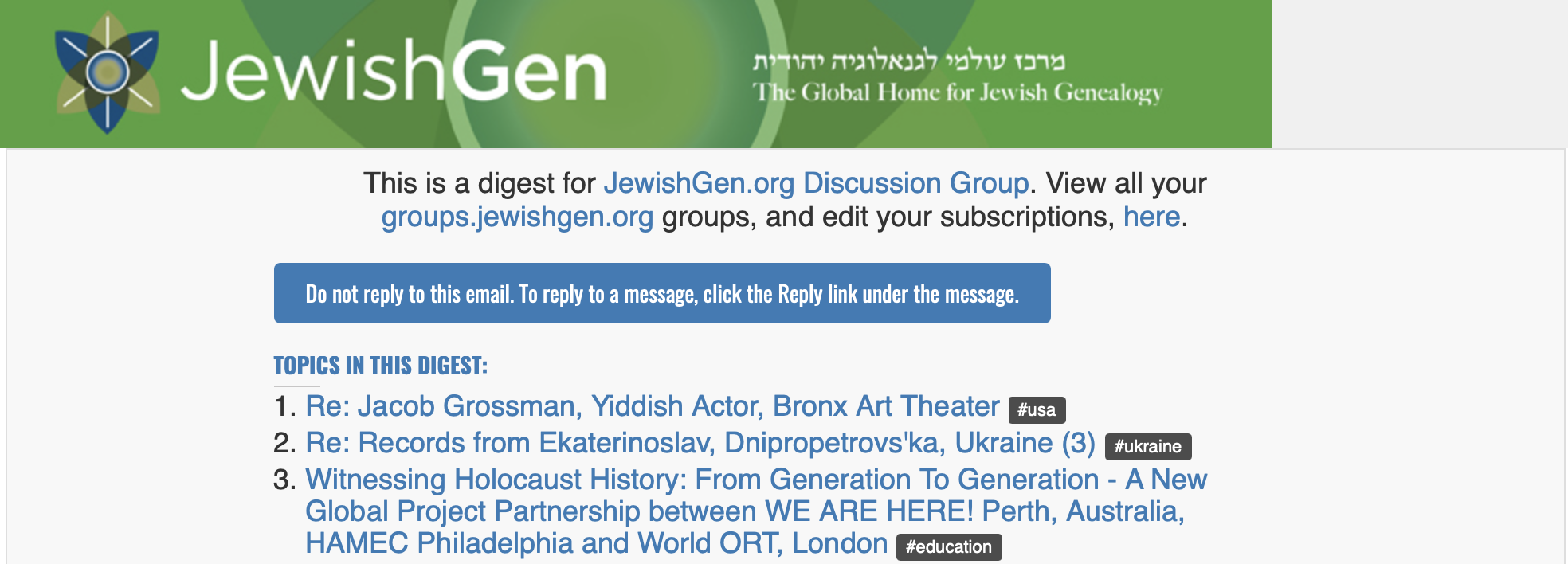
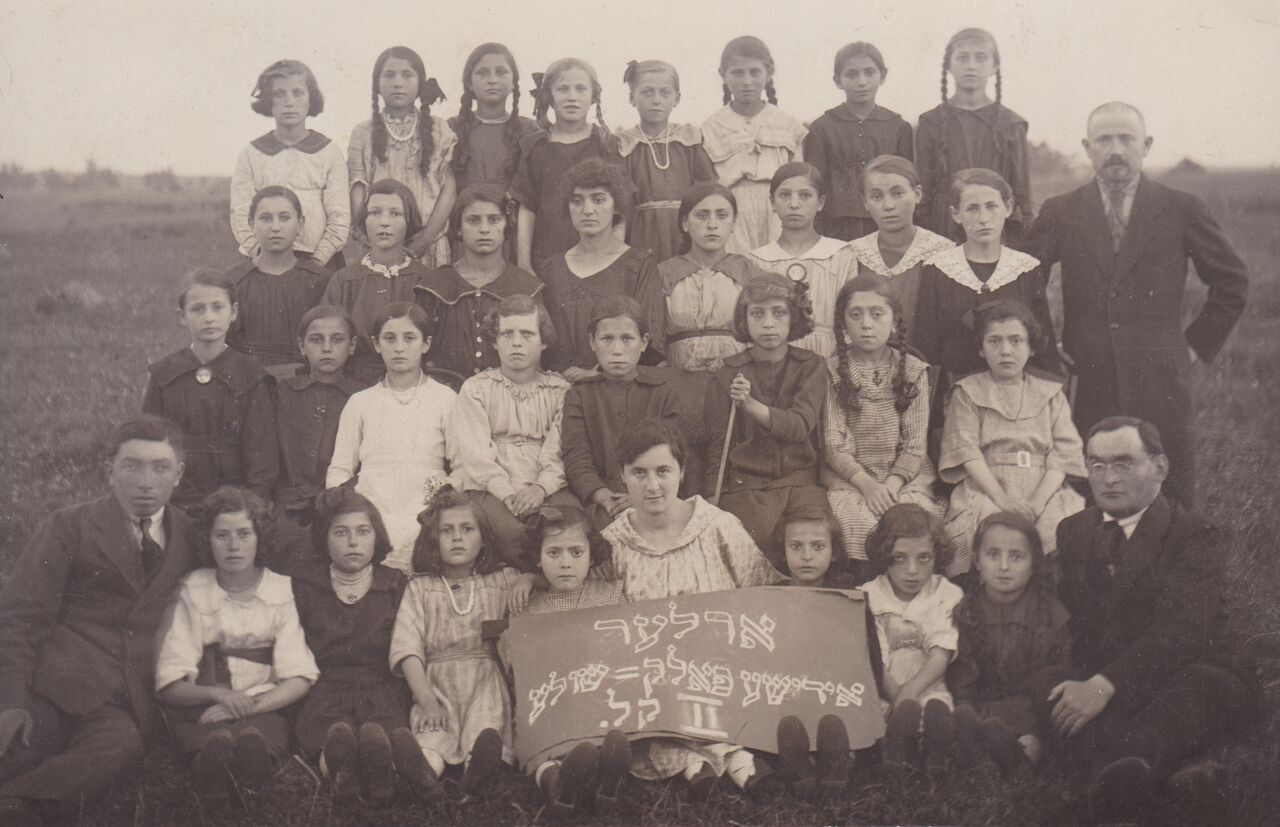
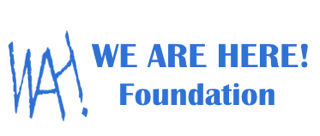
Perth, Australia
This global program will start with 19 ORT schools on 27 January 2021, and will continue with more schools for Yom Hashoah through 8/9 April 2021
Website:
https://wah.foundation/witnessing-holocaust-history-from-generation-to-generation/
Press Statement from HAMEC:
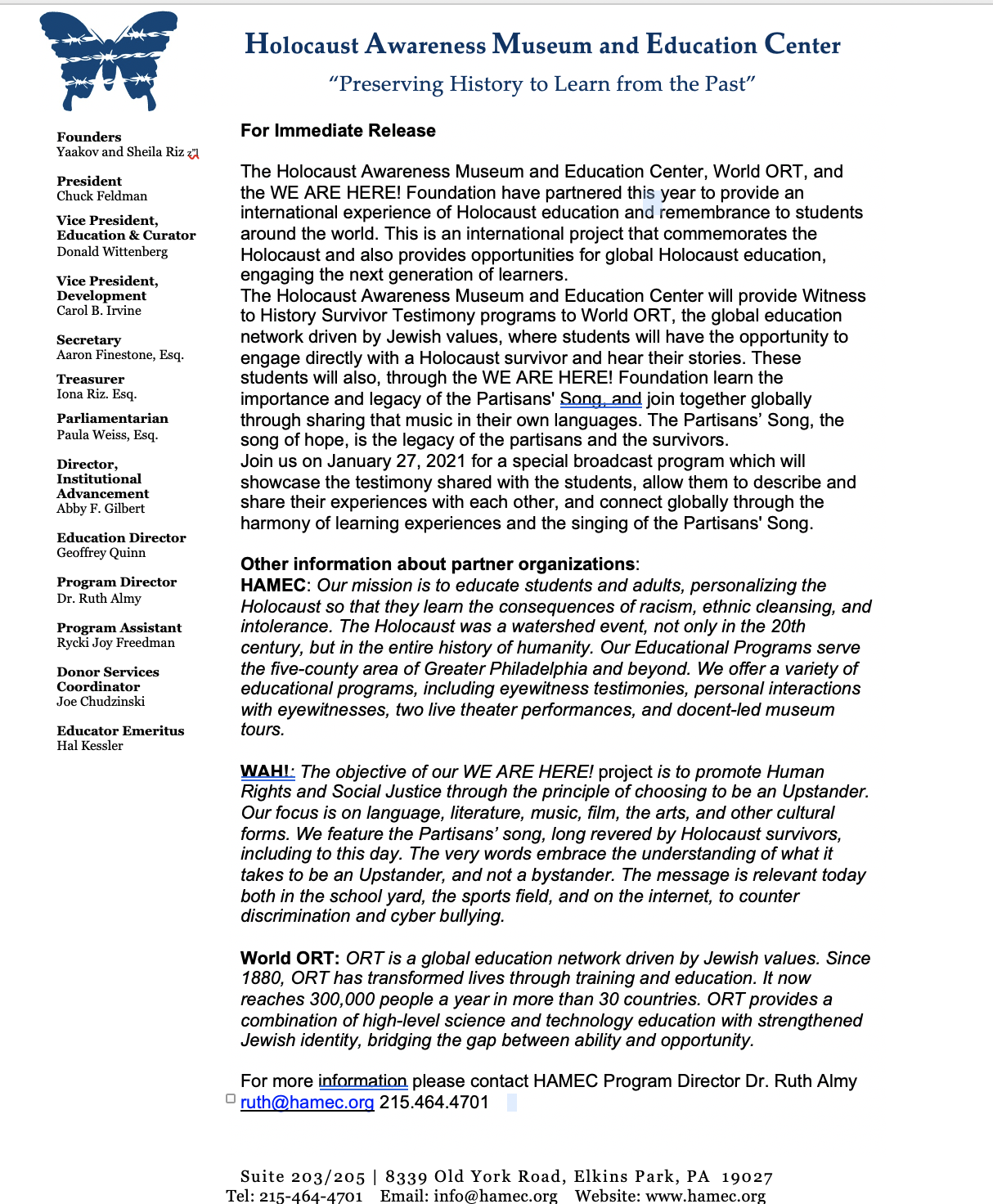

HAMEC ORT WAH! Ruth Almy Intro 27 January 2021
Source: youtu.be/Fqm3R-h6RPE
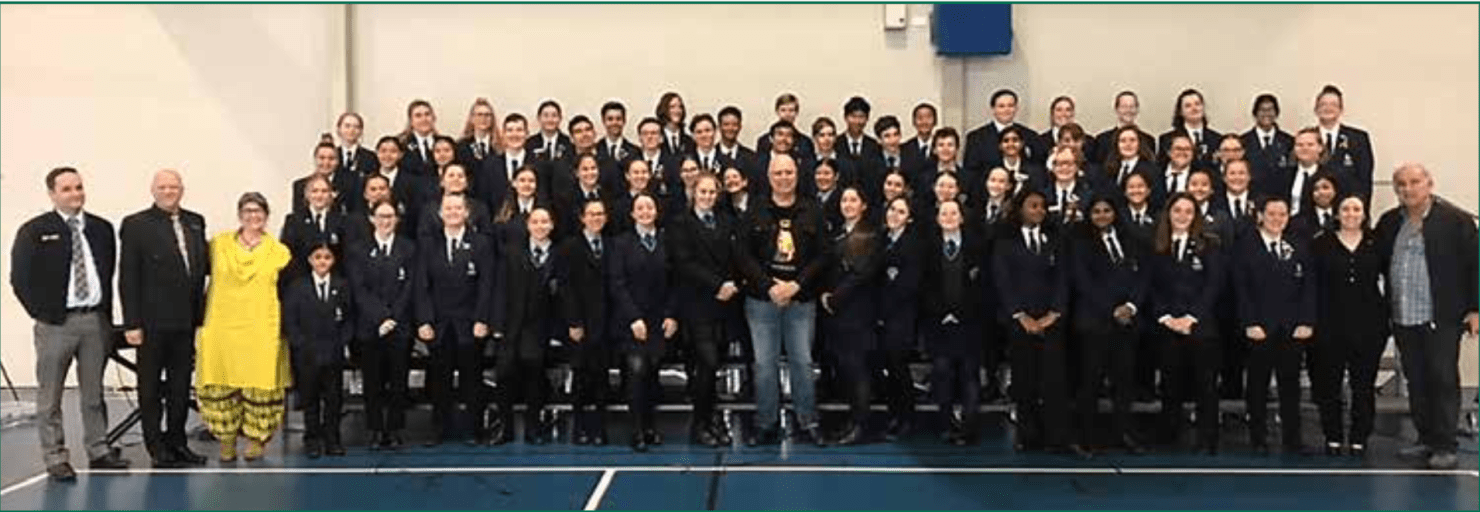
Participating ORT Schools for the 27 January 2021 event are:
| Country/ City | Timezone | School |
| Mexico/ Mexico City | CST | CIM-ORT |
| South Africa/ Cape Town | SAST | Herzlia |
| South Africa/Johannesburg | SAST | King David Victory Park High |
| Bulgaria/Sofia | EEST | Dimcho Debelianov Hebrew and English Language School |
| Netherlands/ Amsterdam | CET | JSG Maimonides |
| Spain/Madrid | CET | ORT Colegio Estrella Toledano |
| Russia/ St Petersburg | MST | ORT de Gunzburg Secondary School # 550 “Shorashim” |
| Russia/ Samara | SST | Samara ORT Secondary School# 42, “Gesher” |
| Russia/ Moscow | MST | ORT Tekhiya, Center of Education # 1311 |
| Russia/Moscow | MST | ORT Moscow Technology School, Gymnasium # 1540 |
| Russia/ Kazan | MST | ORT “Mishpahteinu” Secondary School # 12 |
| Ukraine/ Chernivtsi | EEST | ORT Specialized School #41 |
| Ukraine/ Kiev | EEST | Kiev ORT Educational Complex #141 |
| Ukraine/ Odessa | EEST | ORT Secondary School # 94 |
| Ukraine/ Zhaporozhie | EEST | ORT “Aleph” Jewish Gymnasium |
| Moldova/ Kishinev | EEST | ORT Technology Lyceum |
| Estonia/ Tallinn | EEST | ORT Tallinn Jewish School |
| Latvia/ Riga | EEST | ORT Network Jewish Secondary School |
| Lithuania/ Vilnius | EEST | Vilnius Sholom Aleichem ORT School |
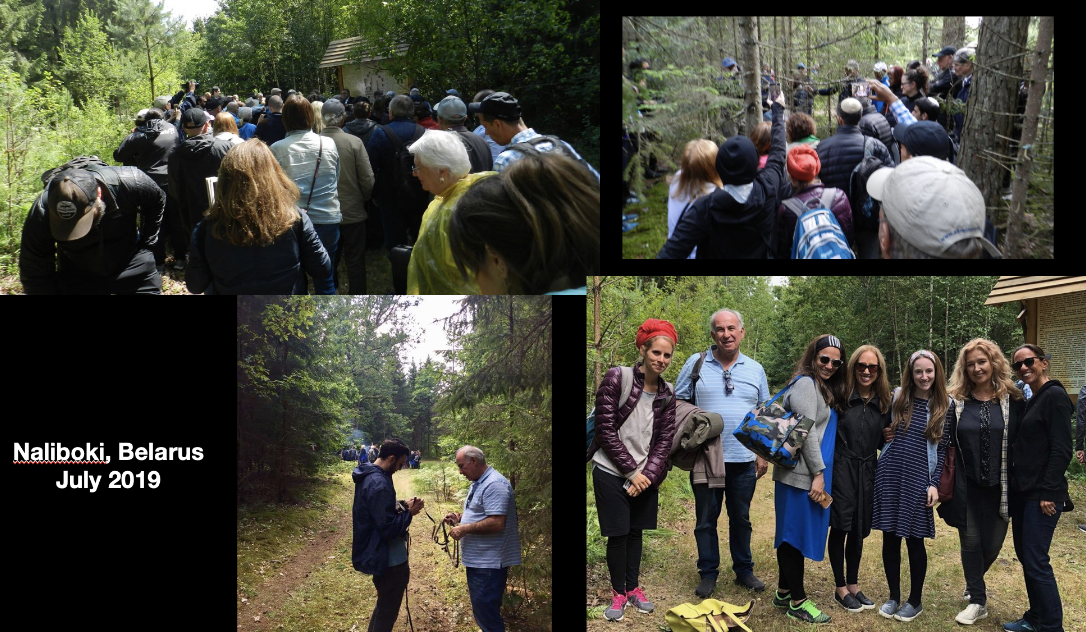
Bielski Reunion, Belarus

For more info about this post, contact Eli Rabinowitz eli@elirab.com

Ellenbrook Secondary College & Carmel High SchoolAt Ellenbrook Secondary College5 August 2019
Source: youtu.be/iIJ-rC-DcWA
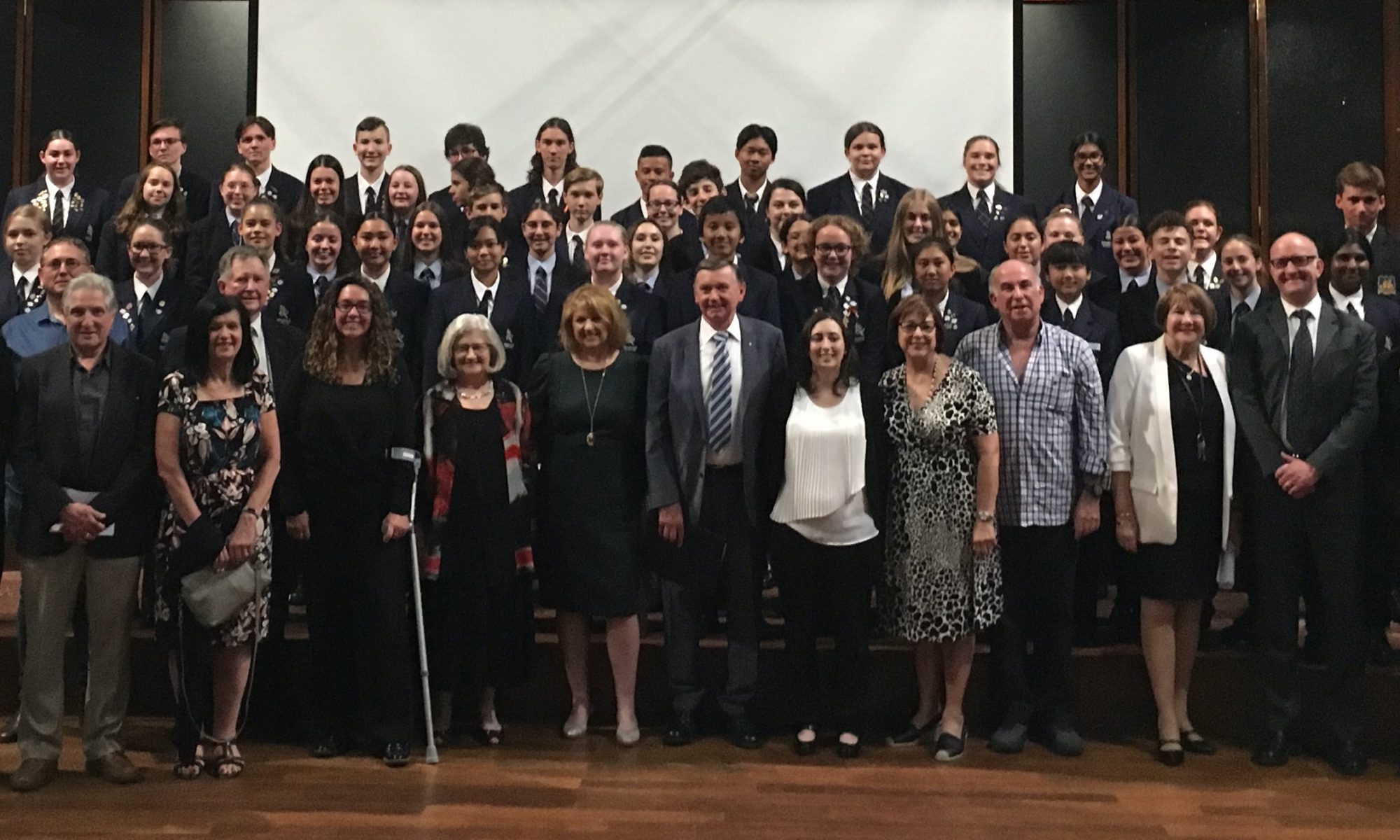

Kaua rawa e mea ko te mate anahe tō huarahi,
Ahakoa āraia ana te kiko o te rangi e te pōuriuri,
Kei te tata mai te wā kua roa e tāria ana;
Ka rū te whenua i te takahi a ngā wae – ki te haka!
Mai i te whenua o te nīkau, ki te whenua kōkēi o te huka,
E haere nei mātou i runga i te kōharihari me te tiwhatiwha;
Katoa ngā wāhi i pipī ai ō mātou toto ki te papa,
Ka puāwai mai i reira tō mātou māia me tō mātou kaha.
Ka whiti tonu te rā i te ata, ka ao te rangi,
Katoa ngā raru o nanahi ka ngaro me te hoa kakari;
Ā, ki te roa te wā i mua i te aranga mai anō o te rā,
Tukua mā tēnei wai ngā tau e whakaaomārama.
I titongia ai tēnei waiata ki te toto, kaua ki te matā;
Ehara i te waiata e haria ai e ngā manu o ō te raumati rā
Engari nā te iwi i te kauhanga riri a Tū,
Tēnei waiata a mātou i hari ki te pū me te pohū.
Kaua rawa e mea ko te mate anahe tō huarahi,
Ahakoa āraia ana te kiko o te rangi e te pōuriuri,
Kei te tata mai te wā kua roa e tāria ana;
Ka rū te whenua i te takahi a ngā wae – ki te haka!
Plunge, Lithuania



Source: en.wikipedia.org/wiki/Ronald_Harwood




More artwork to follow….
Abel Levitt on the passing of Sir Ronald Harwood from natural causes at his home in Sussex on 8 September 2020, at age 85.
Abel:
I would like to write specifically about Ronald’s connection to Plungyan in Lithuania and his visit there with his wife Natasha in 2005.
I grew up with Ronnie Horwitz. We started school at the Kings Road Primary School in 1941, in the same class of sub A. We completed our schooling at Sea Point Boys’ High in 1951. Throughout our school lives we were in the same class, at Kings Road, at Sea Point Junior and at Sea Point Boys’ High. We lived close to one another, Ronnie in Victoria Road Bantry Bay, and, I, 150 yards away in Brompton Avenue. We were in the Cubs and Scouts together at the 10th Green and Sea Point, We played tennis together, watched cricket at Newlands together, competed with one another at the Eisteddfods.
At school, Ronnie took the lead in the school plays. He was outstanding. After we had finished writing our matric exams, Ronnie left for London, to study Dramatic Art, dropped out of the Royal Academy due to financial difficulties, and the rest, as they say, is history. A career of writing and leadership. We maintained a loose relationship, the occasional phone call when I was in London, but we did spend a day together after watching his acclaimed play “Taking Sides”.
It was whilst reading his novel “HOME” that I learned for the first time that Ronald’s father Isaac Horwitz had emigrated from Lithuania. In half a lifetime, our fathers’ ancestry was not a subject of discussion. Glenda and my journey to Lithuania had already began, when I read Ronnie’s book “Home” and discovered that both of our fathers were from Plungyan. I called Ronnie. “What about you and Natasha joining us in a trip to our shtetl Plungyan” I asked. The reply was immediate. And the date 25th May agreed upon, with our guide Regina to be our leader.
The meeting at the airport was emotional. Ronnie had recently been awarded the Oscar for writing the screenplay of what was to become a Holocaust Classic “The Pianist”. And here he was, with his dear wife Natasha, in Lithuania.
Our journey to Plungyan was via Kovno where we visited Eugenijus Bunka, the son of the “Last Jew in Plungyan”, and our friend and partner in our Plungyan ventures. Eugenijus was in hospital, recovering from an operation. He would not be with us on the upcoming welcome to the Oscar winner.
Upon our arrival in the town our first stop was at the apartment of Yacovas Bunka. During the few years of Lithuanian independence from the Soviet occupation, Yacovas Bunka had welcomed some hundreds of Plungyaner Jews. Few would have been of the international stature of the writer, playwright, literary giant and Oscar winner as Ronald Harwood. There was an immediate warm relationship although Bunka spoke no English and Ronald did not understand Yiddish.
The following morning we proceeded to the mass graves, where 1800 Plungyan Jews had been murdered by the Germans and their Lithuanian Collaborators in July 1941. The mass graves in Plungyan are special .The acclaimed sculptor Bunka, together with his Lithuanian sculptor friends had carved the sculptures which stand as sentinels overlooking the mass graves. These mass graves in the Kausenai Forest have been described by some as the most impressive in the whole of Eastern Europe. Ronald did not have family who had remained in Lithuania, but he walked around, silent, as he absorbed the sanctity of the moment. He was profoundly moved. The photo of Ronald sitting quietly on a bench describes the emotion of the visit.
Our next visit was to the Saules Gymnasium. The headmaster Jouzas Milacius welcomed his important guests, the Harwood’s, in one of the multiple European languages that he spoke, but not a word of English. Jouzas is a true friend of ours, a man who was directly helpful when we proposed the establishment of a Tolerance Education Centre in his school. The pupils were assembled in the hall, waiting for the guests to arrive. They were well prepared. Every class had seen the film, “The Pianist”, and had lessons about the Warsaw ghetto uprising. And here they were, seated and waiting to hear from Ronald. The students were riveted by Ronald’s charm and dynamic personality.
The questions were intelligent. These children had as a teacher Danute Serapiniene, a committed and sincere lady who since 1995 had been teaching children about the Holocaust and about the Jews who lived in their town Plunge.
In the evening there was an event at the local Ogynski Palace where Ronald addressed the intellectuals of the town, relating his experiences of working in Poland with the director of the film Roman Polansky. Again the audience interacted with his engaging and charismatic personality and interacted with many questions about the film.
The following morning was a scheduled meeting with the mayor of Plunge, all arranged by the school? We sat in the mayor’s office, listening to the usual welcome and niceties.
And then Ronald Harwood spoke. I remember his words very clearly. “Mr. Mayor, I know that you have difficulties with budgets. I appeal to you, whatever you do don’t reduce the budgets for culture. To do so will be to the detriment of your society.”
As we walked down the stairs at the conclusion of the meeting, Glenda looked at me, and I looked back at her. We were both thinking of the very same thing. That was to create an art competition, called “The Ronald Harwood Holocaust Art competition“. Ronald’s words to the mayor of Plunge had inspired us and since that time the Ronald Harwood Art Competition has grown from a local event, to a regional event and to a national event. The word “Art” has become “Arts” as all forms of art are part of the competition today. Painting, drawing, sculpture, drama, music and writing.
We were present at the 10th anniversary of the Ronald Harwood Arts Competition, held in the Plunge Town Hall. There was an exhibition of prize-winning art works from previous years and entries from throughout Lithuania. The International School in Vilnius arrived with two full busloads of children of all ages who took part in a musical play, in Lithuanian, English and Yiddish with
Vilna and the Holocaust as the theme.
On Friday night at our hotel in the nearby resort of Plateliai we had a traditional Friday night dinner with candle lighting and Kiddush. Our guests included teachers from the district.
Before leaving Plungyan we had a special visit to make. Living in the centre of the town was Kazys Vitkevicius and his wife. As a 14year old in 1941 Kazys had helped his mother to save Jewish girls. He did this by digging pits in which he hid the girls covered by branches, and bringing them food. Both his mother and Kazys were honoured by Yad Vashem and became Righteous among the Nations. Ronald and Natasha were visibly moved at the experience of meeting this special man.
And so back to Vilnius where Ronald addressed the students at the Sholem Aleichem Jewish Day School. Again, the subject was the movie The Pianist and once more the children at the school were enthralled by the charm and competence of the writer of the script of the film
The Harwoods returned to their home in London after an experience which Ronald told me was something beyond his expectations.
For us, that experience of being with my lifelong friend in the land of the birth of our fathers, to witness the appreciation of the young people of the artistry of Ronald Harwood inspired us to talk about Tolerance Education and to display the winning art works from the Ronald Harwood competition in countries around the world, including South Africa and Lithuania.
Abel Levitt

———————
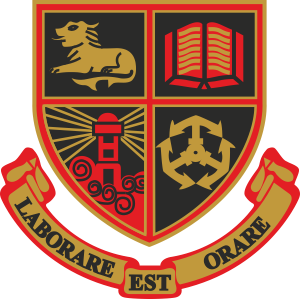
Sea Point High School, formerly Sea Point Boys High School, is a co-educational public high school in Main Road, Sea Point, Cape Town, South Africa. The school was established on 21 April 1884. In 1925, the senior grades were separated from the junior grades. In 1989, the school merged with Ellerslie Girls’ High School after becoming co-educational.
Sea Point Boys connected to Plunyan
 Source: kehilalinks.jewishgen.org/plunge/Home.html
Source: kehilalinks.jewishgen.org/plunge/Home.html















Greetings to all our Keidaner community and friends!
from Aryeh (Leonard) Shcherbakov
secretary of the Association of Keidaners in Israel

For those of you who are not members of the “Roots in Keidan” group on Facebook, and couldn’t attend the commemoration meeting, we send the following note.
As you know, yesterday, Friday, August 28, 2020, we commemorated the 79th anniversary of extermination of our families, who were brutally slaughtered together with all Jewish community of Kėdainiai (Keidan) in one single day – on August 28, 1941.
Two simultaneous commemoration ceremonies were held at 11:00, one – in Israel, by the memorial dedicated to the lost communities of Kėdainiai, Ariogala, Dotnuva, Krakės, and Šėta, at the old cemetery in Holon, another – in Lithuania, by the mass grave in Kėdainiai.
The first one was conducted by a number of descendants of the Keidan Jewish community living in Israel, the second – by our Lithuanian friends in Kėdainiai, who are faithfully devoted to the preservation of memory of our community.
Israel 28 August 2020
Kedainiai, Lithuania 28 August 2020
We thank all those who attended – both in Lithuania and Israel – as well as those who were with us at this sad hour.
Our special thanks to Mrs.Laima Ardavičienė, who prepared a touching presentation commemorating the tragic fate of our community – “Every single man has a name”:
https://view.genial.ly/5f467a84ab36c80d5988f1ef/presentation-every-single-man-has-a-name
With best regards,
Aryeh (Leonard) Shcherbakov
secretary of the Association of Keidaners in Israel
ashcherbakov@hotmail.com
Kedainiai June 2019

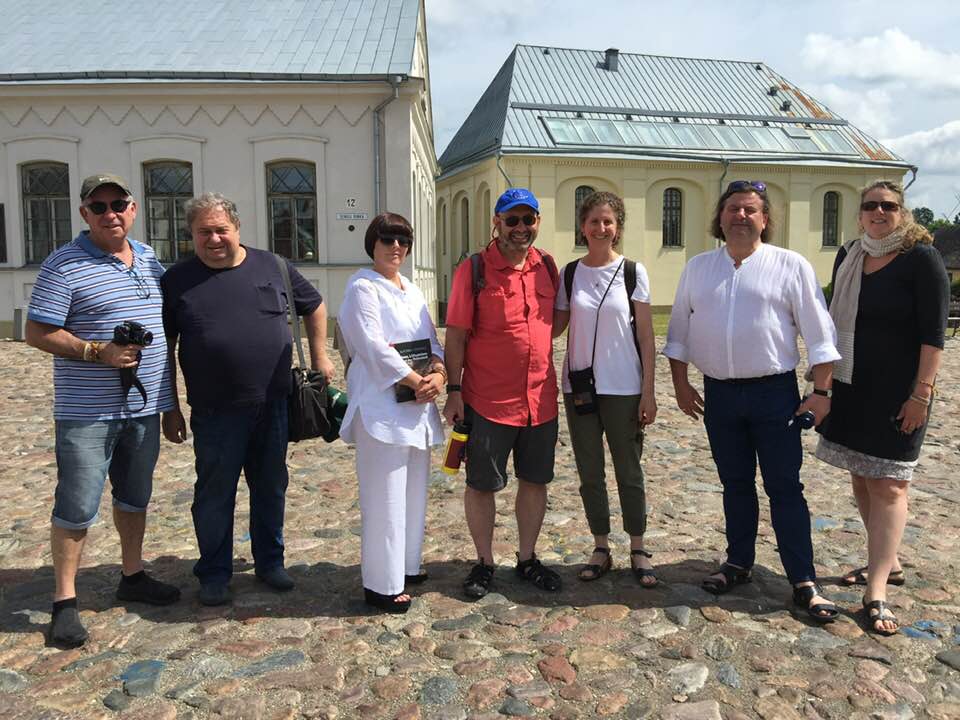
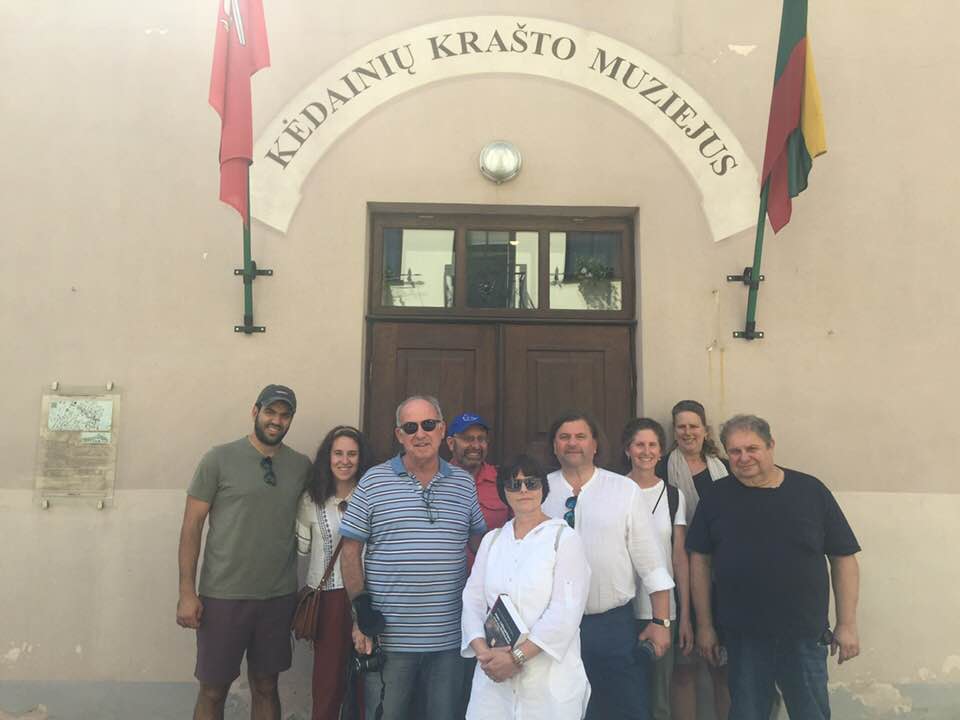

Israel Jul 2019
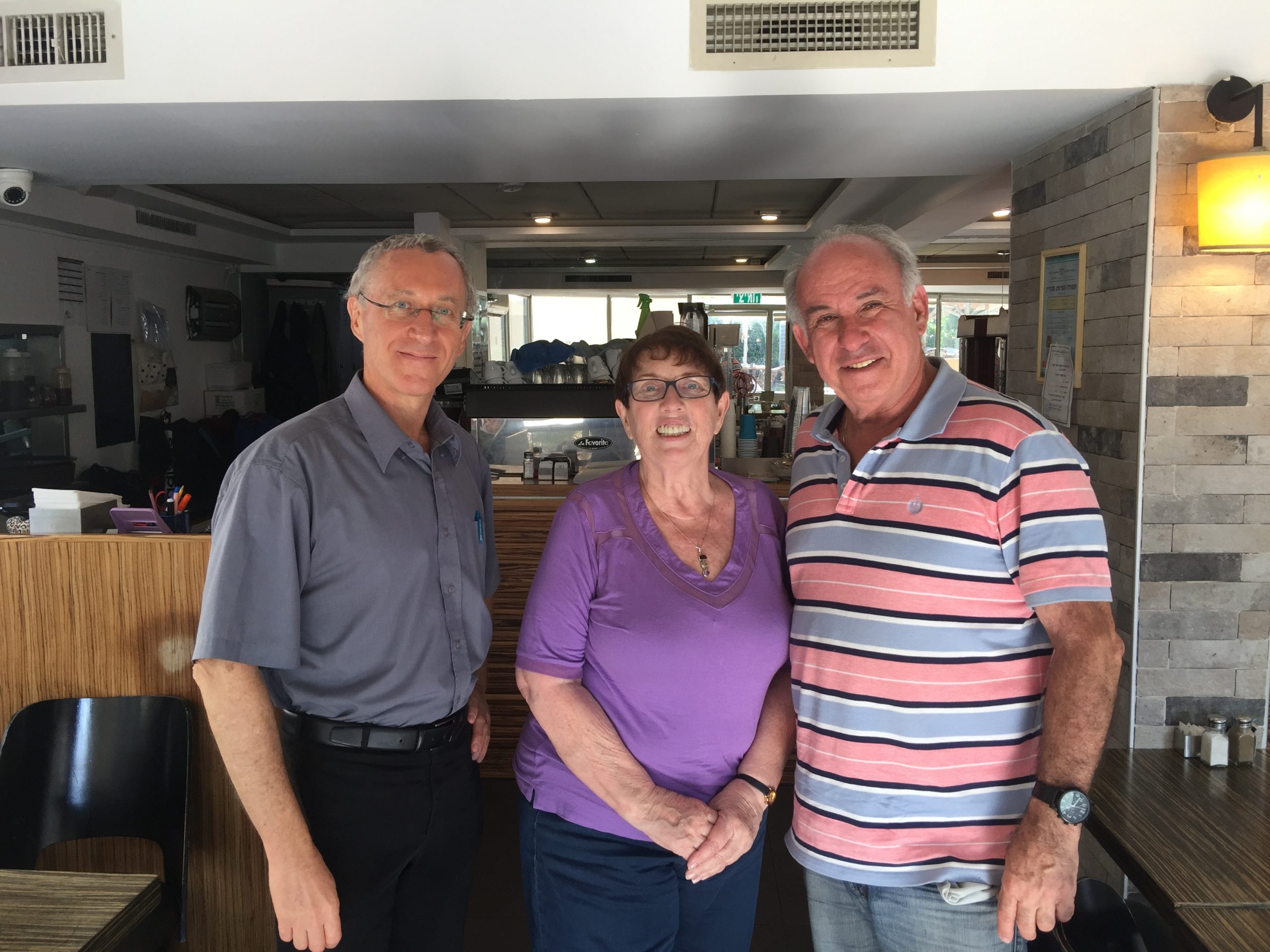
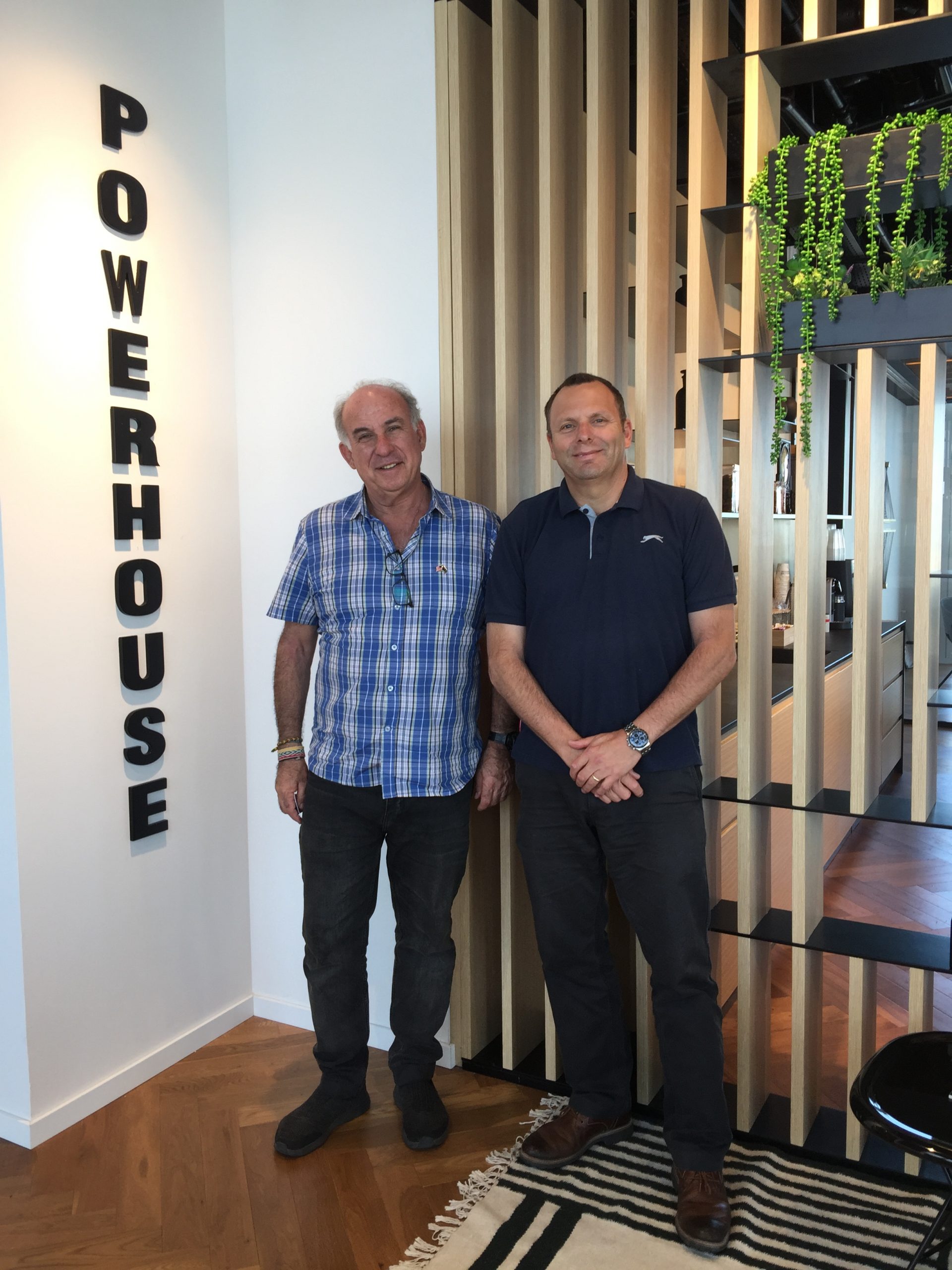
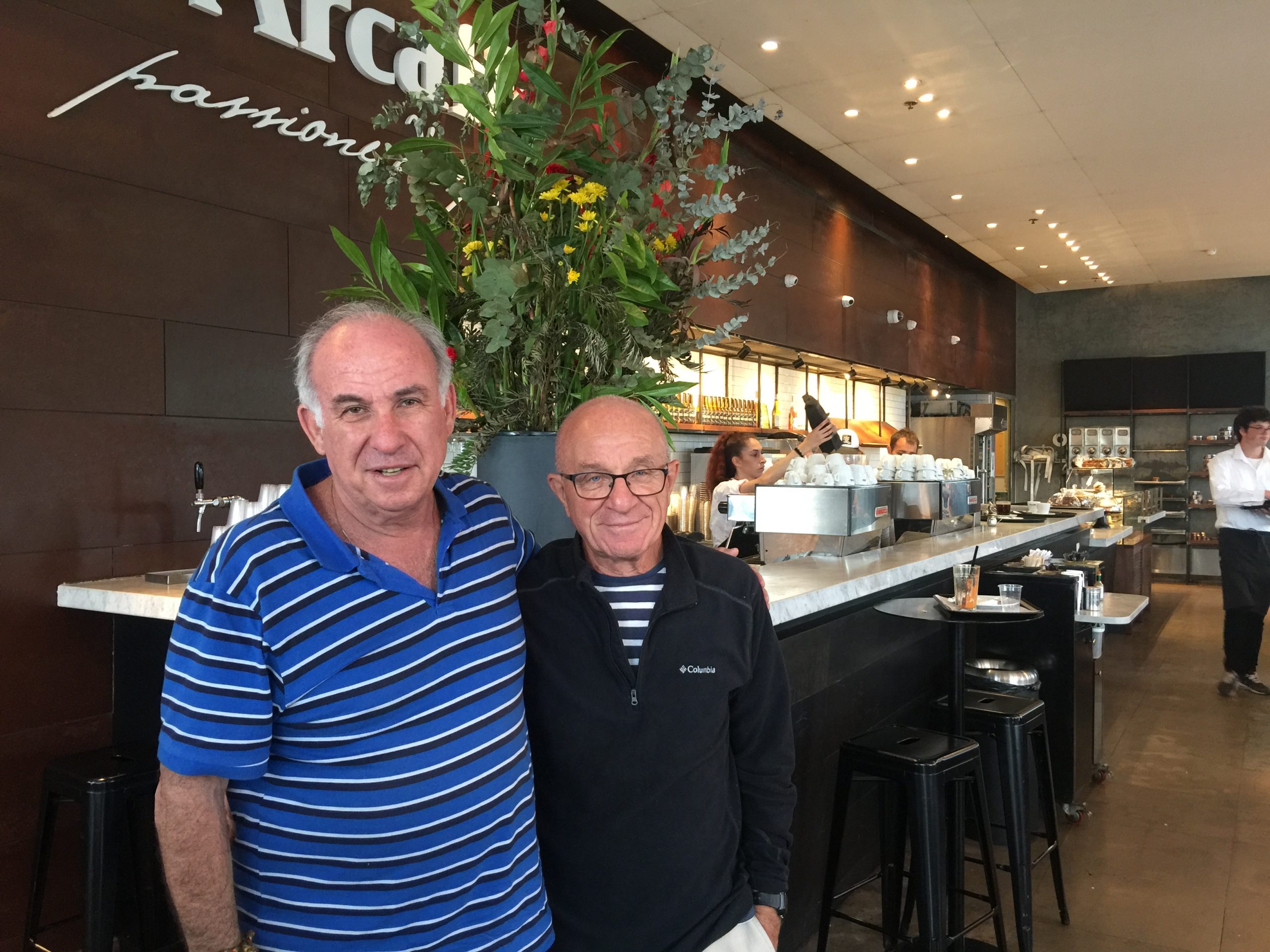
August 2020, For release: Upon receipt
Contact: Sandra Golden, Publicity Chair, IAJGS, publicity@iajgs2020.org
Perth resident elected to International Jewish Genealogy Board
Eli Rabinowitz, a Perth, Australia, resident, was elected to the Board of Directors of the International Association of Jewish Genealogical Societies (IAJGS) at its International Jewish Genealogy Conference, presented virtually on Aug. 12. The Conference drew more than 2300 registrants from 28 countries.
Eli has researched his family’s genealogy and associated Jewish cultural history for over 30 years. A South African-born Australian, Eli has travelled extensively, writing about Jewish life, travel and education on his website, Tangential Travel and Jewish Life. http://elirab.me
Eli writes and manages 87 Jewishgen KehilaLinks, and over 750 WordPress posts. His articles have appeared in numerous publications. Eli has lectured internationally: at educational institutions, commemorative events, at IAJGS and other conferences, and online platforms.
He established the Partisans’ Song Project, and was awarded a U.S. government cultural grant for his WE ARE HERE! Human Rights and Social Justice initiative, https://wah.foundation.
Eli has an Economics Honours degree from the University of Cape Town.
IAJGS is an umbrella organization of more than 91 Jewish genealogical organizations worldwide. The IAJGS coordinates and organizes activities such as its annual International Conference on Jewish Genealogy and provides a unified voice as the spokesperson on behalf of its members. The IAJGS’s vision is of a worldwide network of Jewish genealogical research organizations and partners working together as one coherent, effective and respected community, enabling people to succeed in researching Jewish ancestry and heritage. Find the IAJGS at: www.iajgs.org and like us on Facebook at http://www.facebook.com/iajgsjewishgenealogy.
